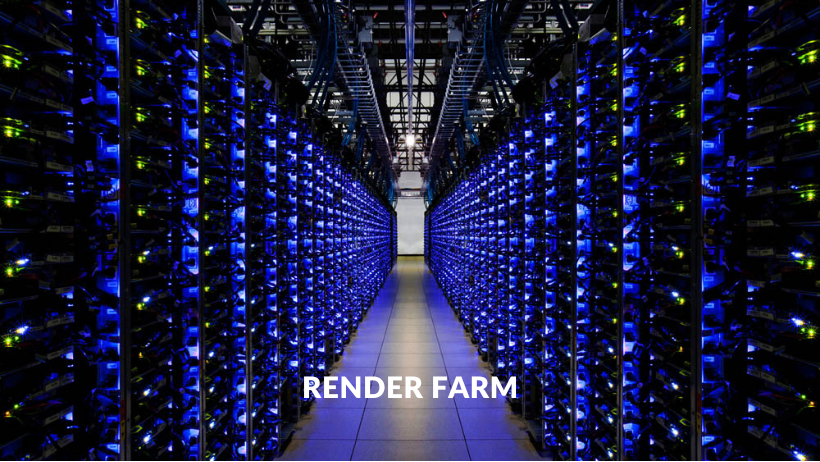In the fast-moving world of digital content, time is everything. Studios that create animations, visual effects, or 3D models often face one big challenge: long rendering times. This is where a render farm becomes a game-changer. It helps studios finish projects faster, meet tight deadlines, and maintain high quality. In this article, 3S Cloud Render Farm will explore how render farms work and how they can drastically reduce production time for studios of all sizes.
What Is a Render Farm?
To begin with, a render farm is a group of powerful computers connected together. These computers work as a team to process and render 3D files. Instead of using a single machine, the workload is shared across many. As a result, the rendering process becomes much faster. Each computer in a render farm is called a render node.
>>> Read more: How to Render Blender Volumetrics in the Cloud Without Artifacts
Why Rendering Takes So Long
Rendering involves turning 3D models into final images or animations. This requires complex calculations. Lights, shadows, reflections, and effects must all be processed. A single high-resolution frame can take minutes—or even hours—to render on a local computer. When a scene has thousands of frames, this becomes a major time bottleneck. Therefore, many studios experience significant delays during production.

>>> Read more: Creating a Game-Ready Asset in Blender: From Modeling to Export
How Render Farms Speed Things Up
First of all, render farms split the job into many smaller tasks. Each render node handles part of the work. As a result, the entire project is completed much faster. For example, if rendering a scene takes 10 hours on one computer, a render farm with 20 nodes might finish it in under 30 minutes.
Additionally, render farms run on high-end hardware. These machines are optimized for rendering. They have powerful CPUs, GPUs, and large amounts of RAM. This means faster processing and fewer technical issues.
Moreover, many modern render farms offer cloud access. Artists can upload their files from anywhere in the world. They don’t need to invest in expensive hardware. Everything runs in the cloud, and results are returned quickly.
>>> Read more: Render Farm or Local PC? What’s Best for Your 3D Workflow
Key Benefits for Studios
1. Faster Project Turnaround
With a render farm, studios can meet deadlines without sacrificing quality. Artists no longer need to wait overnight for previews. Instead, they can see results in minutes, make changes, and re-render quickly
2. Cost Savings

Setting up an in-house render farm is expensive. It requires hardware, electricity, cooling, and ongoing maintenance. On the other hand, a cloud-based render farm offers the same power with a lower upfront cost. Studios pay only for the time they use.
3. More Time for Creativity
When rendering is slow, artists must wait before making changes. This can limit creativity. Thankfully, a render farm removes that delay. Teams can experiment more and focus on quality.
4. Scalable Power
As projects grow in size, render farms can scale up. Whether you’re rendering a 10-second ad or a full-length movie, you can increase computing power on demand. Thus, you are never limited by your hardware.
5. Reliable Results
Render farms are built for reliability. If a render job fails, the system automatically retries it. Consequently, there is less risk of losing time due to technical problems. Most professional render farm services also offer real-time monitoring and support.
Common Use Cases
Render farms are widely used across creative industries. For instance, animation studios use them to produce films and series. Game developers use them for in-game cinematics. Architects rely on them for photorealistic building renders. Even freelance artists benefit from using render farms to meet client deadlines.
How to Get Started with a Render Farm
Starting with a render farm is simple. Most services, like 3S Cloud Render Farm, offer user-friendly interfaces. You upload your project, select settings, and hit render. There’s no need to install complex software.
Before uploading, make sure your files are clean. Check for missing textures or broken links. Use supported file formats. 3S Cloud Render Farm supports tools like Blender, Maya, 3ds Max, and more.
You can also preview render costs and estimated time before starting. This helps you manage your budget and timeline.
Why 3S Cloud Render Farm?
3S Cloud Render Farm stands out for its speed, simplicity, and support. It is trusted by studios and freelancers around the world. Here’s why many users choose 3S:
- Fast Rendering: Powered by high-performance CPUs and GPUs.
- Affordable Pricing: Pay-per-use model saves money.
- Wide Software Support: Blender, Cinema 4D, Houdini, and more.
- Easy to Use: Clean UI, automatic scene check, real-time progress.
- Dedicated Support: 24/7 assistance and expert advice.
With 3S Cloud Render Farm, you can reduce production time without the stress. Whether you’re producing animations, architectural visuals, or short films, we’re here to help you render smarter-not harder.
Conclusion
In today’s content-hungry world, speed is key. Studios can no longer afford to wait days or weeks for final renders. By using a render farm, they gain speed, flexibility, and freedom. The production process becomes smoother and more efficient.
If you want to boost your workflow, save costs, and deliver projects on time, it’s time to embrace the power of a render farm.
Let 3S Cloud Render Farm be your rendering partner. Upload your next project today and experience the difference.
